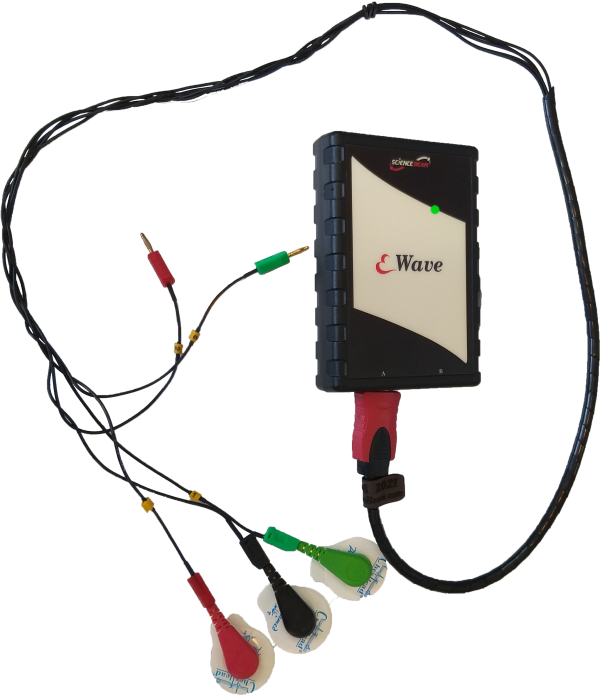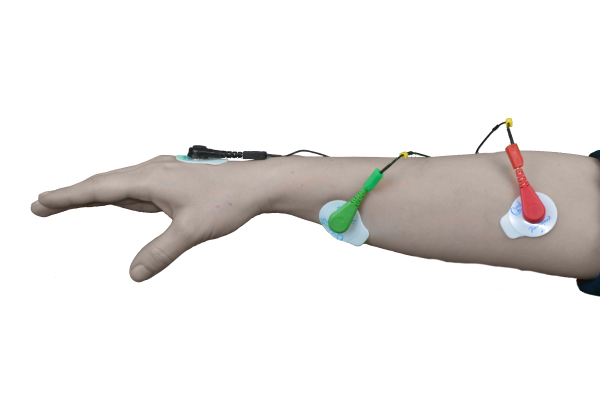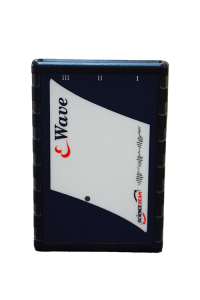What is muscle biofeedback?
Muscle biofeedback is a therapeutic approach that involves measuring and providing feedback on muscle activity to help individuals gain awareness and control over their muscular functions. This technique is often used in various fields, including physical therapy, sports training, and stress management. The primary goal of muscle biofeedback is to enhance voluntary control of muscle activity, improve muscle function, and address issues such as pain, tension, and movement disorders.
The human body is equipped with a complex system of muscles that play a crucial role in various functions, including movement, stability, and support. Muscle biofeedback leverages technology to monitor and display information about muscle activity, allowing individuals to receive real-time feedback on their physiological responses. This feedback can be visual, auditory, or tactile, providing a tangible representation of muscle function.
One of the key components of muscle biofeedback is electromyography (EMG), a technique that records the electrical activity produced by skeletal muscles. EMG sensors are placed on the skin overlying the targeted muscles, and the electrical signals generated by muscle contractions are amplified and displayed on a monitor. This visual representation allows individuals to observe their muscle activity in real-time.
In the context of physical therapy, muscle biofeedback is often employed to assist individuals with conditions such as muscle weakness, motor control deficits, or musculoskeletal disorders. By providing immediate feedback, individuals can learn to activate specific muscles more effectively, enhance coordination, and improve overall movement patterns. For example, someone recovering from a knee injury may use muscle biofeedback to ensure proper activation of the quadriceps muscles during exercises, promoting better joint stability and function.
In sports training, muscle biofeedback can be a valuable tool for athletes looking to optimize their performance. Athletes can use EMG feedback to refine their technique, enhance muscle recruitment, and prevent injuries. For instance, a runner may use muscle biofeedback to ensure proper activation of the gluteal muscles during sprinting, improving running efficiency and reducing the risk of overuse injuries.
Beyond physical performance, muscle biofeedback is also applied in stress management and relaxation techniques. Chronic stress can lead to muscle tension and discomfort, contributing to various health issues. Through muscle biofeedback, individuals can learn to recognize and control excessive muscle tension, promoting relaxation and reducing the physiological effects of stress. This application is particularly relevant in the treatment of conditions such as tension headaches, temporomandibular joint (TMJ) disorders, and generalized anxiety.
The feedback provided in muscle biofeedback sessions can take different forms. Visual feedback often involves a graph or chart displaying the amplitude and frequency of muscle activity. Auditory feedback may include tones or sounds corresponding to different levels of muscle tension. Tactile feedback utilizes vibrations or pressure to signal changes in muscle activity. The choice of feedback modality depends on the individual’s preferences and the specific goals of the intervention.
Muscle biofeedback is typically conducted in a controlled environment, such as a clinical setting or a sports training facility, under the guidance of a trained professional. The therapist or coach works collaboratively with the individual to set specific goals and design a tailored intervention plan. The process involves baseline assessments, goal setting, feedback sessions, and regular reassessment to track progress.
One of the strengths of muscle biofeedback is its ability to make the invisible aspects of muscle activity visible. Many individuals may not be aware of inefficient muscle patterns, asymmetries, or imbalances that contribute to pain or limited function. By providing real-time feedback, muscle biofeedback raises awareness and facilitates active participation in the rehabilitation or training process.
In addition to its applications in rehabilitation and sports, muscle biofeedback has found use in diverse fields such as ergonomics, workplace health, and assistive technology. In ergonomic assessments, muscle biofeedback can help identify and address muscle imbalances that contribute to poor posture and discomfort. In workplace health programs, it can be integrated into interventions aimed at preventing musculoskeletal disorders and promoting overall well-being among employees.
The effectiveness of muscle biofeedback depends on various factors, including the individual’s motivation, the specificity of the feedback, and the expertise of the practitioner. Research has shown promising results in the use of muscle biofeedback for conditions such as chronic pain, tension-type headaches, and movement disorders. However, like any therapeutic approach, its outcomes can vary, and it may not be suitable for everyone.
In conclusion, muscle biofeedback is a versatile and valuable technique that harnesses technology to enhance awareness and control of muscle activity. Whether applied in rehabilitation, sports training, stress management, or other fields, muscle biofeedback empowers individuals to actively participate in optimizing their muscular function. By bridging the gap between conscious intention and physiological response, muscle biofeedback opens new avenues for improving physical performance, promoting relaxation, and addressing a wide range of musculoskeletal issues.

Uses of muscle biofeedback
Physical Therapy and Rehabilitation:
- Muscle Activation: Muscle biofeedback is commonly used in physical therapy to help individuals activate specific muscles effectively. This is crucial for rehabilitation after injuries, surgeries, or in cases of muscle weakness.
- Motor Control: It aids in improving motor control by providing real-time feedback on movement patterns, helping individuals refine their coordination and control over muscle groups.
- Postural Correction: Muscle biofeedback assists in correcting posture-related issues by making individuals aware of muscle imbalances and promoting proper alignment.
Sports Training and Performance Enhancement:
- Technique Refinement: Athletes use muscle biofeedback to refine their techniques by ensuring optimal muscle recruitment during specific movements, thereby improving overall performance.
- Injury Prevention: It helps prevent injuries by identifying inefficient muscle patterns or imbalances that may contribute to overuse or strain during athletic activities.
- Strength Training Optimization: Muscle biofeedback guides athletes in optimizing muscle engagement during strength training exercises, ensuring targeted muscle groups are effectively activated.
Stress Management and Relaxation:
- Muscle Tension Reduction: In stress management programs, muscle biofeedback helps individuals identify and reduce excessive muscle tension, promoting relaxation and alleviating symptoms associated with stress.
- Biofeedback-assisted Relaxation Techniques: It can be integrated into relaxation exercises, such as progressive muscle relaxation, where individuals learn to consciously release tension in different muscle groups.
Pain Management:
- Chronic Pain Conditions: Muscle biofeedback is used in managing chronic pain conditions, such as tension-type headaches and temporomandibular joint (TMJ) disorders, by addressing muscle tension and promoting relaxation.
- Biofeedback for Pain Perception: It can be part of a comprehensive pain management strategy, helping individuals modulate their pain perception by gaining control over physiological responses.
Ergonomics and Workplace Health:
- Posture Assessment: In ergonomic assessments, muscle biofeedback is employed to evaluate and improve posture, reducing the risk of musculoskeletal issues associated with prolonged sitting or repetitive tasks.
- Prevention of Work-Related Musculoskeletal Disorders: Integrating muscle biofeedback into workplace health programs helps prevent musculoskeletal disorders by identifying and addressing issues related to muscle imbalances and poor ergonomics.
Biofeedback-assisted Relaxation Devices:
- Wearable Devices: Advances in technology have led to the development of wearable biofeedback devices that individuals can use for self-monitoring and self-regulation of muscle activity.
- Home-based Therapy: Some individuals may benefit from using biofeedback devices at home under the guidance of healthcare professionals, enabling them to continue their therapy outside clinical settings.
Neuromuscular Rehabilitation:
- Neurological Conditions: Muscle biofeedback can be applied in the rehabilitation of individuals with neurological conditions, helping improve muscle control and functional movement in cases of stroke, spinal cord injuries, or neurological disorders.
Biofeedback-assisted Gaming and Virtual Reality:
- Interactive Rehabilitation: In rehabilitation settings, muscle biofeedback is integrated into interactive games and virtual reality environments, making therapy more engaging and motivating for patients.
Assistive Technology:
- Adaptive Devices: Muscle biofeedback technology can be incorporated into adaptive devices to assist individuals with mobility challenges, allowing them to control devices or interfaces through muscle signals.
Psychophysiological Research:
- Studying Mind-Body Connections: Muscle biofeedback is utilized in psychophysiological research to explore the connections between mental states, emotions, and physiological responses, providing insights into the mind-body relationship.
In summary, muscle biofeedback is a valuable tool with diverse applications, ranging from clinical rehabilitation to sports training, stress management, and beyond. Its versatility and effectiveness make it a widely used and researched approach in various fields, contributing to improved physical performance, enhanced well-being, and targeted therapeutic interventions.



